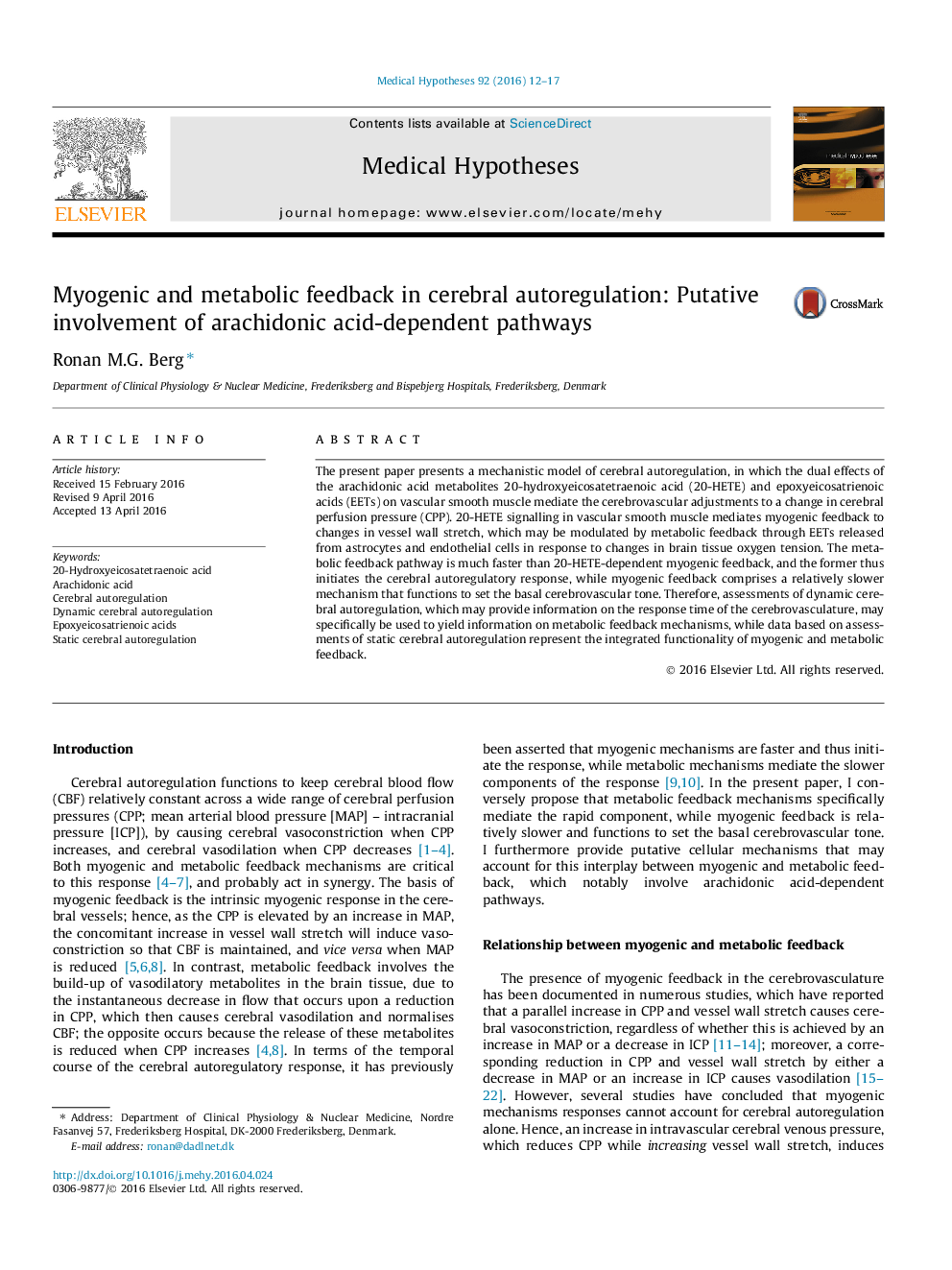| Article ID | Journal | Published Year | Pages | File Type |
|---|---|---|---|---|
| 2488910 | Medical Hypotheses | 2016 | 6 Pages |
The present paper presents a mechanistic model of cerebral autoregulation, in which the dual effects of the arachidonic acid metabolites 20-hydroxyeicosatetraenoic acid (20-HETE) and epoxyeicosatrienoic acids (EETs) on vascular smooth muscle mediate the cerebrovascular adjustments to a change in cerebral perfusion pressure (CPP). 20-HETE signalling in vascular smooth muscle mediates myogenic feedback to changes in vessel wall stretch, which may be modulated by metabolic feedback through EETs released from astrocytes and endothelial cells in response to changes in brain tissue oxygen tension. The metabolic feedback pathway is much faster than 20-HETE-dependent myogenic feedback, and the former thus initiates the cerebral autoregulatory response, while myogenic feedback comprises a relatively slower mechanism that functions to set the basal cerebrovascular tone. Therefore, assessments of dynamic cerebral autoregulation, which may provide information on the response time of the cerebrovasculature, may specifically be used to yield information on metabolic feedback mechanisms, while data based on assessments of static cerebral autoregulation represent the integrated functionality of myogenic and metabolic feedback.
